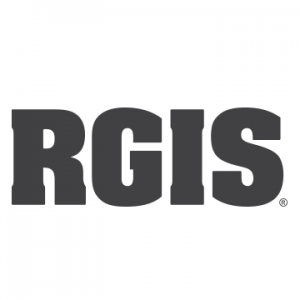New Report Demonstrates the Importance of Inventory Record Accuracy Within the Retail Industry, and Its Impact on Sales
AUBURN HILLS, Mich. & LONDON, January 29, 2020 (Newswire.com) - RGIS and the ECR Community Shrinkage & OSA Group are announcing the results of a new study regarding inventory record accuracy undertaken by academics from EMYLON Business School, TU Darmstadt, and Cardiff Business School.
The researchers conducted an experiment at seven European retailers from the grocery/general merchandise and fashion/apparel sectors where approximately one million stock keeping units (SKUs) sold in about 100 stores were counted at specific points in time. A comparison of stores that were subjected to stock counts to stores that were not, allowed the researchers to understand how an improvement in inventory record accuracy improves sales.
The research showed that approximately 60% of the analyzed SKUs suffered from inventory record inaccuracies. The average magnitude of inventory record inaccuracies for the affected SKUs were roughly +6.6 and -6.0 units for positive and negative discrepancies, respectively. After correcting the inventory record inaccuracies, the participating retailers experienced a sales increase between 4% and 8% - for the entire portfolio of SKUs on stock.
Prior to the research, it was commonplace to expect that the higher the IRI, the higher the sales uplift would be after reconciling the records. However, the research indicated that it also depends on SKU prices. The retailers that were categorized as"‘very accurate" and had high profit margins saw a financial benefit from truing up their inventory records as well. The results demonstrated that the most significant opportunity for improvement came from high-volume expensive items, and the variations in inventory record inaccuracy shown by product category were particularly informative to which categories attract the most attention.
“I have been working in the field of asset protection for many decades, and we have always known in the business that in every store, inventory records are not always accurate and that if they would be more accurate, that sales would grow. However, we never had the actual data that could prove what we felt in our gut was obvious. This research, for the first time, delivers that certainty and the real evidence to support our intuition, and the compelling data needed to support a greater investment in prioritizing improving inventory record accuracy,” said John Fonteijn, Head of Global Asset Protection & Business Continuity Management at Ahold Delhaize and Chair of the ECR Community Shrinkage & OSA Group.
The researchers also examined how inventory accuracy deteriorates over time following a stock count. The results showed that stock records start to deteriorate directly after a stock count, and that especially SKUs with high accuracy levels deteriorate a lot during the initial weeks after the stock count.
“The start of the year, when traffic is not at its peak and inventory levels are low, can be seen as a good time for stock counts. However, our research has shown that you may want to think of stock counts in a different way: as a sales increase strategy rather than an unnecessary cost,” said Aris A. Syntetos, Professor at Cardiff Business School. “Our report, prepared in close collaboration with ECR, shows stock counts to lead to important sales lift opportunities, and we believe it will change the way the IRI problem is perceived in the industry.”
The research provides retailers and manufacturers the information needed to asses taking the following actions:
- decide how much they should invest against improving inventory records accuracy
- prioritize investments in stock counts per product category and class
- understand the behavior of discrepancies that stem from different IRI sources to properly investigate root causes
- discuss counting as a sales increase strategy rather than a cost-intensive necessity
Webinar on results for retailers
ECR Community Shrinkage & OSA Group hosted a webinar to present the results of this study. The webinar was presented by professors from EMYLON Business School, TU Darmstadt, and Cardiff Business School to explore their research objectives and findings. Hannah Newton, Business Intelligence Manager for Tesco PLC, shared her perspective on the results and implications for retail organizations. The webinar archive is accessible by registering here. The report is free to download from the ECR Community Shrink & OSA Group website here.
About ECR Community Shrinkage & OSA Group
The Group is part of the Efficient Consumer Response Community, a voluntary and collaborative retailer-manufacturer platform with a mission to fulfill consumer wishes better, faster, and at less cost. The Group has acted as an independent think tank focused on creating imaginative new ways to better manage the problems of loss and on-shelf availability across the retail industry. Championing the idea of Sell More and Lose Less, the Group is open to any retailer and manufacturer to join.
About RGIS
RGIS takes clients beyond the count with integrated inventory services that include store surveys, space management, store remodels and resets, RFID solutions, and asset optimization. With proven successes in all aspects of retail, healthcare, and manufacturing inventory, it is no surprise that more organizations, in more places, trust RGIS to provide the information and insight they need to fully understand their assets and make better business decisions.
ECR Media Contact
Colin Peacock
colinmpeacock@ecr-shrink-group.com
RGIS Media Contact
Simon Parry
sparry@rgis.com
Source: RGIS, LLC
